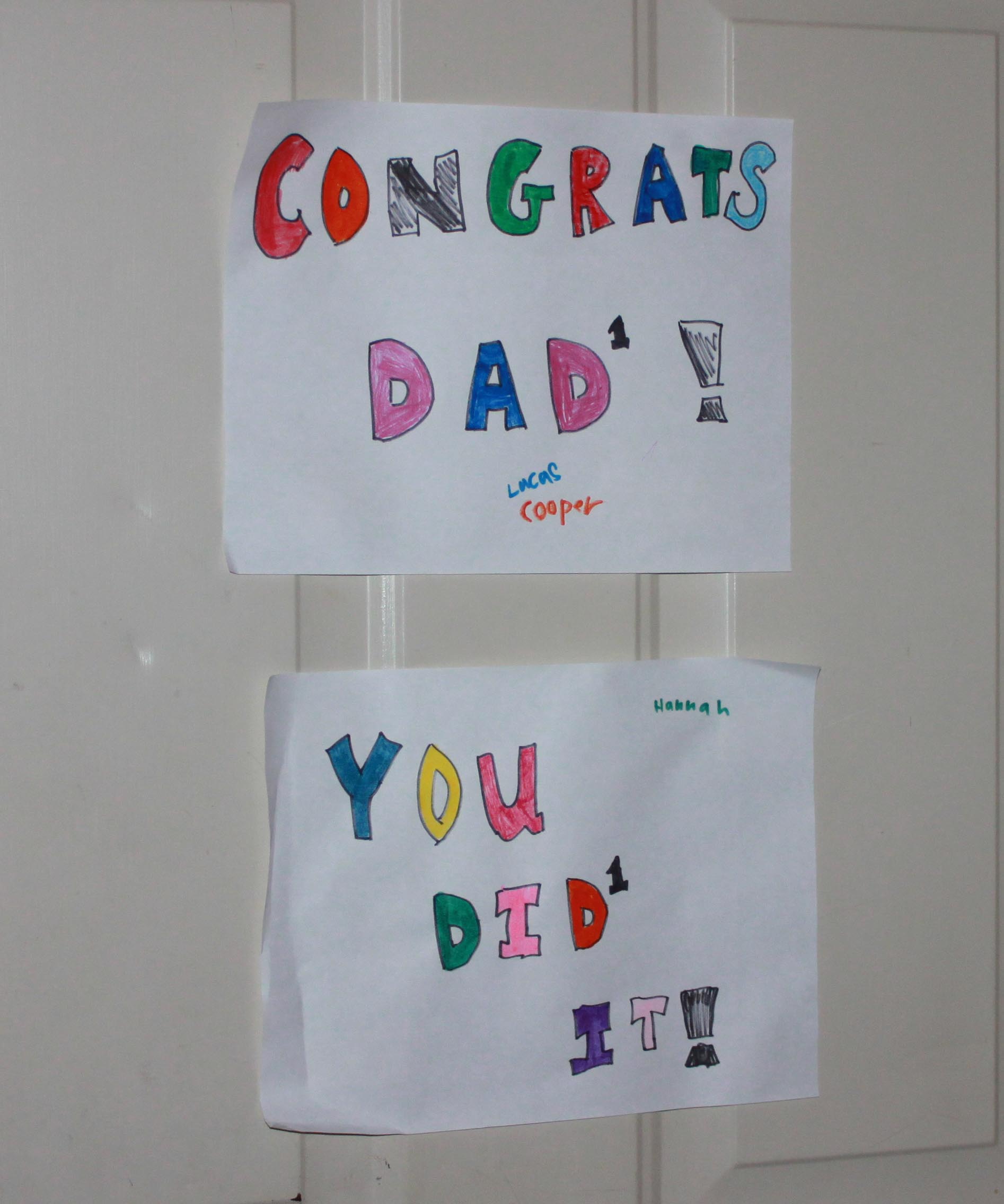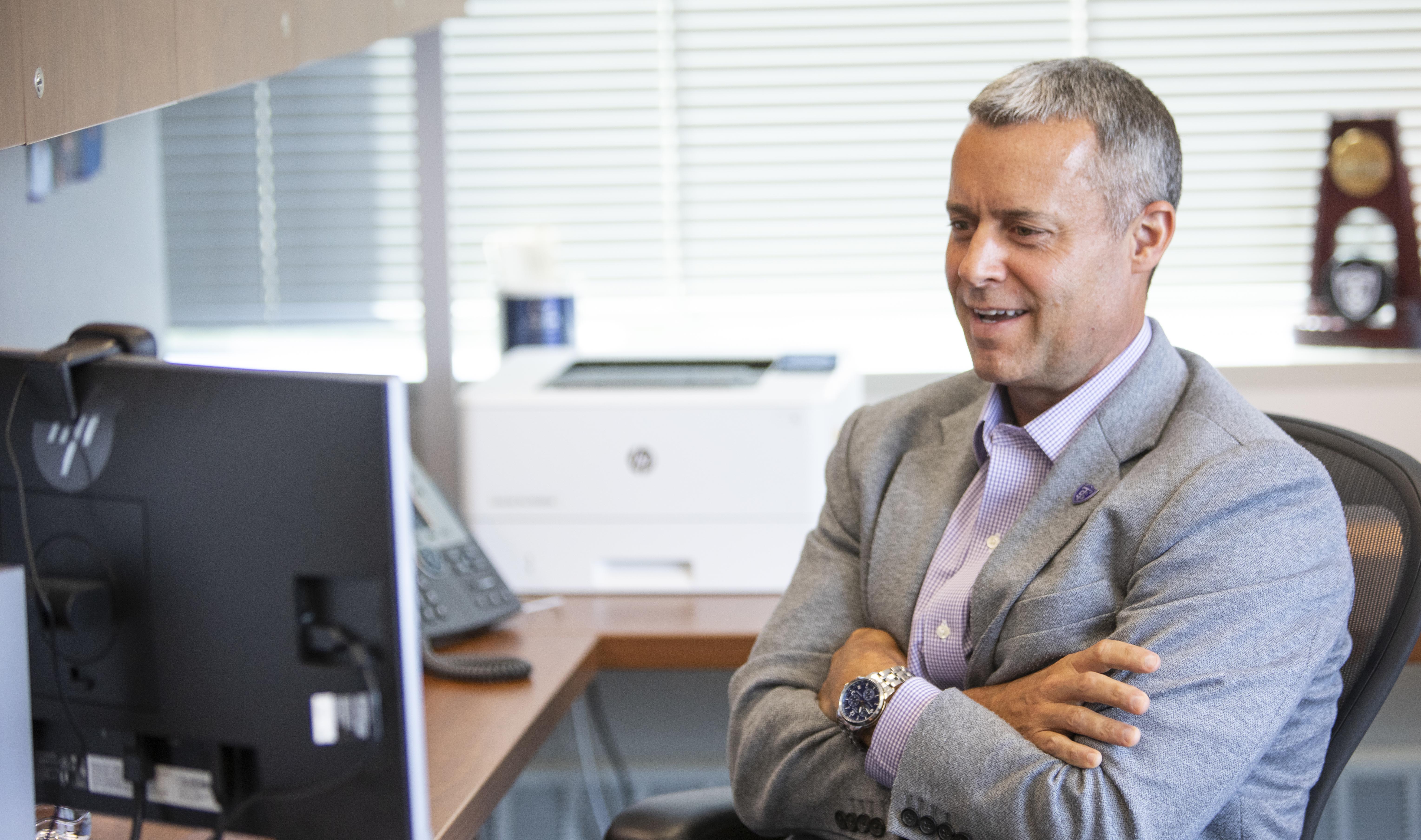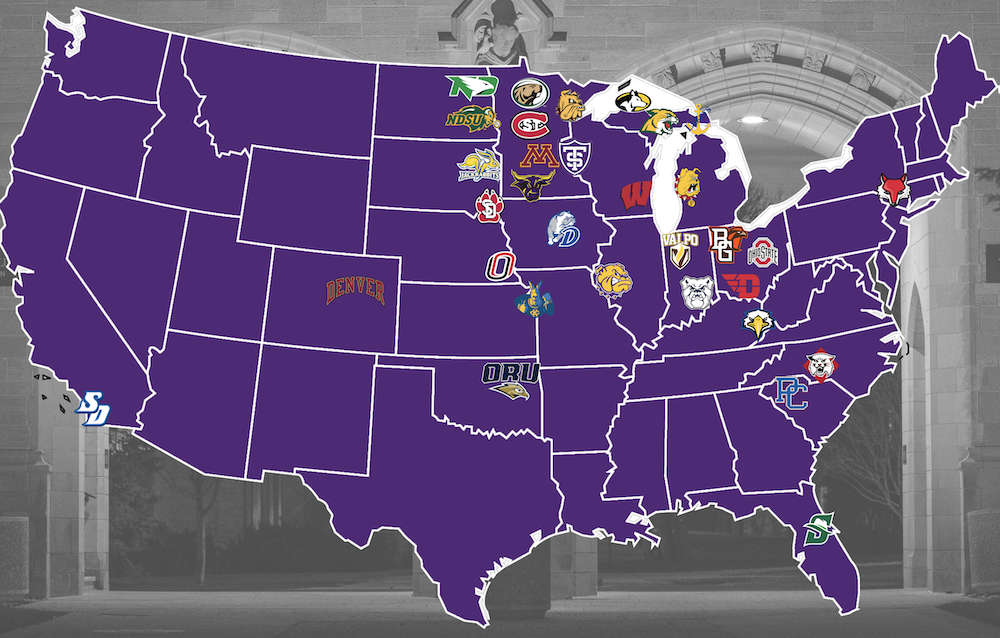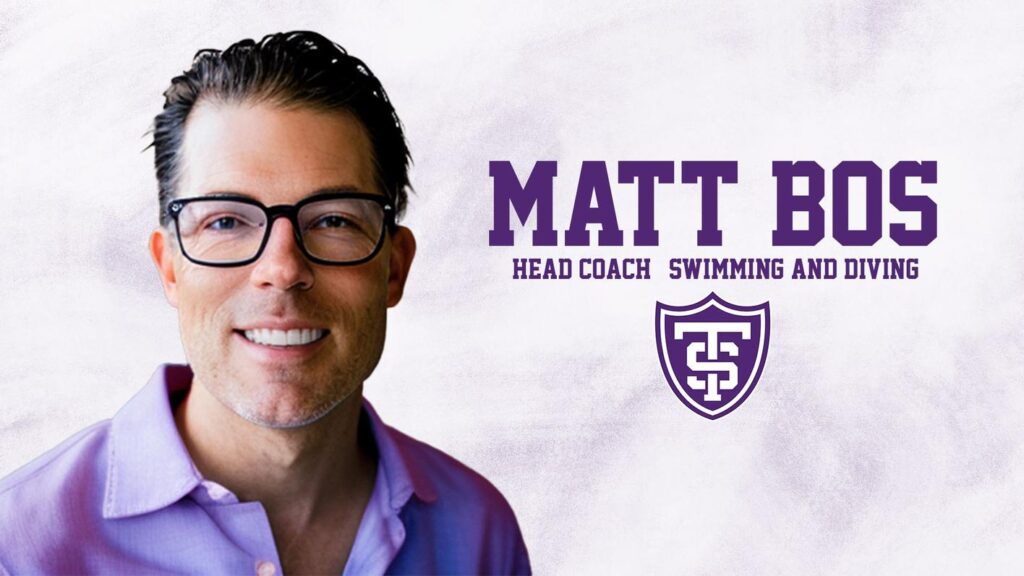This story is featured in the fall/winter 2020 issue of St. Thomas magazine.
About three hours after St. Thomas’ historic Division I athletics news finally became official on July 15, Phil Esten arrived home in Mendota Heights to find a special message awaiting him.
Taped to the door leading from the garage into his family’s mudroom were two sheets of white paper – the message “Congrats Dad1! You Did1 It!” colored in. The Tommies’ vice president and director of athletics took special note of the D1 mark, which was created by St. Thomas' marketing team.
“The kids were on brand,” he joked to reporters the next day at the school’s first-ever virtual press conference. The Esten kids knew dad had done something big. It was, after all, the culmination of a 14-month whirlwind that began when the Minnesota Intercollegiate Athletic Conference (MIAC) announced in May 2019 it was removing St. Thomas due to competitive parity reasons.
Now, here Esten was – fresh off announcing St. Thomas would be the first modern National College Athletic Association (NCAA) Division III program to reclassify straight to Division I.

The Esten children created a celebratory message for their dad in honor of St. Thomas going D-I.
A bold move, for sure. Historically, programs transitioning to higher divisions are afforded years to plan these types of shifts. When the Tommies begin competing in their new D-I conferences next fall, barely a year will have gone by since the NCAA approved St. Thomas’ waiver request to bypass D-II.
And yet, a key theme mentioned amid the swirl of media stories following the July announcement was that this move comes at “the right time.” That may not be nearly as crazy as it sounds. In many ways the shift falls neatly in line with St. Thomas’ long history of entrepreneurial evolution.
“We’ve been on, and will always be on, a journey,” Executive Vice President and Provost Richard Plumb said. “We won’t ever not be.”
Fitting the plan
Gaining a bigger picture perspective on St. Thomas’ long-term trajectory requires looking back at the last 50 years. In 1970, when the university constructed the O’Shaughnessy Educational Center, it kicked off a series of projects and program additions that shaped St. Thomas into the institution it is today.
Those advancements include:
• Starting an MBA program in 1974
• Becoming coed in 1977
• Signing an affiliation agreement with The Saint Paul Seminary/Archdiocese in 1987
• Transitioning from a college to a university in 1990
• Opening the Minneapolis campus in 1992
• Starting the first bachelor’s degree in mechanical engineering at a private college/university in Minnesota in 1998
• Opening a law school in 2001
• Evolving the Engineering Department into the School of Engineering in 2004
• Opening Dougherty Family College in 2017
• Launching the Morrison Family College of Health in 2019

Vice President and Director of Athletics Phil Esten led a virtual press conference in July announcing that the NCAA approved St. Thomas' waiver to move directly from Division III to Division I, joining the Summit League for most sports and the Pioneer Football League. Photo by Mark Brown.
And that’s not even mentioning the 27 new buildings and 38 acquired properties during that 50-year time period. (Read more about St. Thomas' physical transformation.)
“When you look back at the evolution of our school over the last 40 or 50 years, it’s been very entrepreneurial in spirit,” Esten told Axios in July. “Whether that’s going coed, moving from college to university, expanding to a second campus or adding a law school.”
That same entrepreneurial spirit drove the path to D-I. While the athletics transition wasn’t exactly planned (up until May 2019, St. Thomas intended on remaining a D-III MIAC school), it did fit the direction outlined in the St. Thomas 2020 strategic plan aimed at achieving a long-term vision for the university.
Among the priorities in that plan was a commitment to enhancing the university’s visibility and profile. In May 2019 – as St. Thomas heard its name on national sports talk shows – it became very clear the circumstances surrounding the Tommies’ departure from the MIAC would have the unintended benefit of national visibility. Esten called the national attention “quite remarkable.”
“I wasn’t surprised it was of interest to many in college athletics, as the conditions were unprecedented,” he said. “The coverage beyond our industry was both humbling and inspiring at the same time. We had now piqued the interest of many across the country, and our story had become one with momentum and great support for a positive resolution.”

St. Thomas Division I reclassification in 2021. Division I conferences include Summit League, WCHA, Pioneer Football League and CCHA.
A bigger footprint
The Tommies’ new D-I conferences immediately provide an expanded geographic footprint. The Summit League, Women’s Western Collegiate Hockey Association (WCHA) and Central Collegiate Hockey Association (CCHA) will have the Tommies traveling across the Midwest on a regular basis. The Pioneer Football League goes broader – with competition as far west as San Diego (the University of San Diego) and as far east as Poughkeepsie, New York (Marist University).
That means audiences in all those areas will begin to see the St. Thomas name – and become aware of its story – on a regular basis. Considering the vast majority of the university’s students currently come from the immediate region (Minnesota and neighboring states within driving distances of the Twin Cities), going D-I provides another avenue to reach a wider audience. Long term, this could lead to a more geographically diverse student body.
This is particularly important considering the Minnesota state demographer reports a peak in graduating high school seniors in the 2024-25 school year, followed by a sharp decline. Considering that Minnesota exports more high school graduates to other states for college than almost every other state in the nation, the ability to attract additional out-of-state students becomes more critical by the day.

“We are the largest private university in the state, by far,” President Julie Sullivan said. “We’re the only private comprehensive university in Minnesota. There is so much that’s distinct about us and who we are, and our profile is not the same as anyone else in this state.”
Sullivan is confident St. Thomas can use the D-I move to help spread that word.
“My optimism about St. Thomas has never been higher,” Sullivan continued. “We are stepping onto a larger platform to tell our story about what we do, why we do it and how we do it well.”
The road ahead
Of course, the reclassification needs to be completed first, and no one has any illusions the journey to D-I will be easy – particularly during a global pandemic that has upended college sports. The hard question of financing was on the table long before COVID-19 became a part of daily life in the spring. The pandemic’s onset has exacerbated the situation.
For starters, the financial impact of the pandemic has already caused the university to reexamine its transition expenses and reduce total investment, while implementing a longer transitional period. The athletics department is anticipating incremental athletics expenses to be offset by philanthropy and additional revenue associated with D-I athletics.
Progress is already being made; earlier in the fall, for example, Esten announced the hiring of Ben Fraser as senior associate athletic director, development. Then in October, St. Thomas launched the Tommie Athletic Fund as the main philanthropic arm of the D-I move, along with the program’s first two fully endowed scholarships (one each for men’s and women’s basketball).
Aside from philanthropy and incremental revenue, financing also will come from a Board-of-Trustees controlled endowment fund that supports strategic initiatives to match the university’s long-term goals – the same fund that supported the 2017 Dougherty Family College launch and the 2019 opening of Morrison Family College of Health.
Yes, COVID-19 makes things challenging in the short term, but university leaders view the move to D-I athletics as very much a long-term, strategic initiative.
“This opportunity might not be here for St. Thomas in another year or two, or three years. The opportunity is here for us now,” Sullivan told the Star Tribune. “So knowing that we have the belief that it is the right long-term decision for us, then we just have to pace the transition and pace the investment such that we don’t compromise any of our other priorities, particularly our academic programs.”
Keeping a strong focus on academics starts with admissions and recruiting; the university says it will continue to look for students (regardless of whether they are student-athletes or students-at-large) capable of successfully graduating from St. Thomas in four years.
There’s also the question of competition itself. Moving from D-III to D-I will present its own challenges on the fields, courts, pools and courses as the student-athletes adjust to a higher caliber of competition. Sullivan and Esten both, however, emphasize the move was always about more than just athletics, pointing to the fact that many of St. Thomas’ new competitors look very similar from an institutional perspective. Both the Summit League and the Pioneer Football League, for example, include member colleges and universities with profiles similar to St. Thomas’ (think Denver, San Diego, etc.) while the new hockey leagues provide opportunities to extend visibility across the Midwest region for a school steadily rising in national rankings.
When the U.S. News & World Report’s annual Best Colleges report published in August, St. Thomas was ranked among the top third of all national universities and moved up among the top 20 Catholic universities in the country. A look at the universities ranked ahead of St. Thomas reveals a list of institutions with D-I athletics programs. While athletics may not be the measure of a comprehensive university, St. Thomas’ leaders understand the platform it provides.
"We are stepping onto a larger platform to tell our story about what we do, why we do it and how we do it well," said President Julie Sullivan.
Even though D-I may not have been the plan before May 2019, the results are fitting the university’s larger goals nicely.
“If you get into a prescribed path, you miss probably the most exciting opportunities,” Sullivan told the Star Tribune in August.
The Tommies won’t miss this one.
Learn how you can support St. Thomas’ transition to Division I at link.stthomas.edu/supportathletics.






